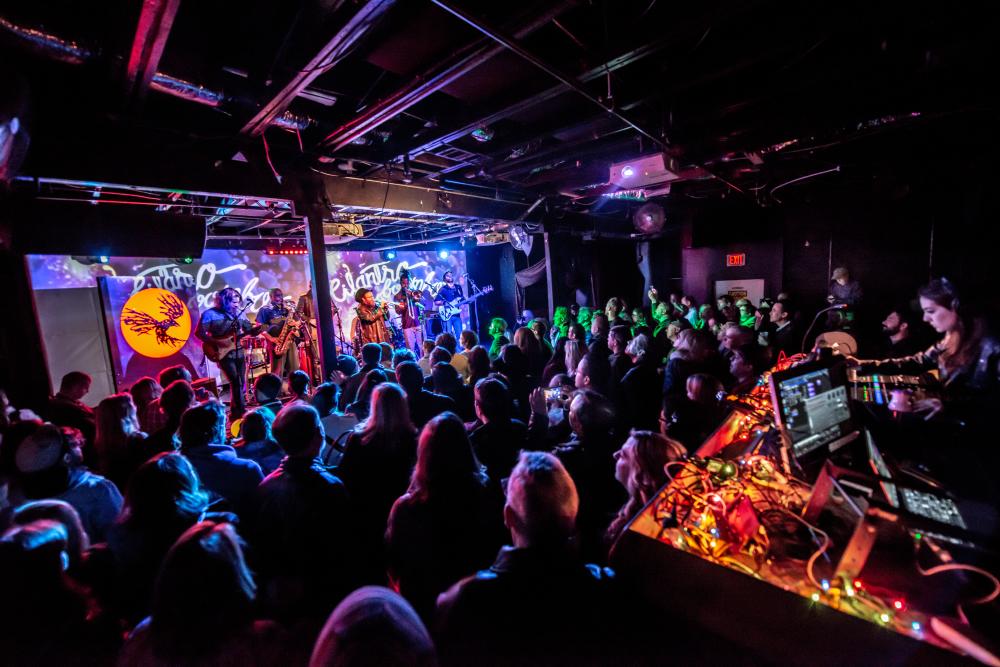Excitement About Dance Fridays
Wiki Article
A Biased View of Dance Fridays
Table of ContentsSome Ideas on Dance Fridays You Should Know10 Easy Facts About Dance Fridays DescribedFascination About Dance FridaysGetting My Dance Fridays To Work
Let's consider Salsa dancing and music as a huge Tree that looks like this: Salsa is danced global while many technological elements of the dancing coincide throughout styles (6 steps over 8 beats danced on a quick-quick-slow or slow-quick-quick rhythm), there are several "hallmark" functions of the primary styles of Salsa that distinguish one from the other.Pairs taking part in an Online casino Rueda dance all relocate unison as called by a Leader. Distinguishing features of Cuban design salsa are round turn patterns (with "break back" actions on matters 1 and 5) as well as body language influenced by standard Afro-Cuban folkloric dancings. Distinguishing attributes of Cali design salsa fasts and intricate maneuvering, danced with a strong hand hold link in between companions.
The origins of the design are a topic of debate, yet it is claimed that New york city design Salsa dance came from the 1960's because of the influx of Latin American emigrants after the Cuban Revolution. Eddie Torres is the most well understood New York style professional dancer, being almost generally attributed with promoting the design to dance centres outside of New york city.
The basic rhythm of "On-2" is slow-quick-quick. The "youngest" of the styles of Salsa, L.A. Style (some people have called it "West Coastline" style) came to be preferred in the 1990's and has its beginnings in ballroom (Mambo, Swing and Cha, Cha, Cha). Turn patterns lead and follow techniques are heavily influenced by these styles, with the Cross Body Lead being the foundation of the design.
Dance Fridays Can Be Fun For Everyone
Design are execution of turn patterns and numbers in the "port", with the break actions on counts "1" and "5". While Salsa music has solid beginnings in Cuban, Colombian and Puerto-Rican folkoric traditions, it can not be marked down that all Afro-Latin and Latin American societies have contributed to modern Salsa songs as we know it today.It's possible that due to political factors the payment of Afro-Cuban society and heritage to modern Salsa in the 1960's and 70's is not extensively recognized, however it can not be overlooked the big contribution and impact of the "Queen of Salsa", Celia Cruz (salsa club san francisco). Thanks to the internet and ease of access to information, the popularity of Salsa music, dancing and culture has actually straight from the source spread out like wildfire over the last 30 years and also then modern Salsa artists proceed to pay homage to the Founding Papas and Mommy of Salsa.
Today Salsa music is produced, executed and celebrated worldwide. In 2000 the impact of Latin American music and society (not simply Salsa) was recognized by the National Academy of Recording Arts and Sciences in the United State and the Latin Grammy Honors were produced. The Latin Grammy's have accentuated the Salsa Legends and contemporary Salsa musicians alike
Not known Factual Statements About Dance Fridays
identifying qualities of Salsa songs are: 4/4 time signature, Boy Clave and Tumbao rhythms, Montuno Piano Unless you have a history in music, the above 3 attributes probably indicate absolutely nothing to you. A much easier means to explain Salsa songs is how it does NOT seem like various other kinds of Latin American music.Bachata is a straight 4 beat dance with an occurrence of a syncopated guitara line and a clear absence of any "hard" piano, brass (trumpet, trombone) lines. Cha, Cha, Cha looks like Salsa songs the most as it feels like "truly slow" salsa/mambo. salsa club san francisco. Cha, Cha, Cha can be identified by it's focus of the double tumbao beat on counts 4 +5 and 8 +1 (the "cha-cha-cha") You have actually been to a Salsa night at a club and you're connected you like the songs, the power, the look of two dancers moving throughout the dancing flooring performing trendy spins and turn patterns
It's time for lessons. With numerous workshops out there and various designs to pick from, where does a complete newbie start? Many brand-new professional dancers pick to find out L.A. "On-1" design slotted Salsa designs are one of the most prevalent in North America (with some exemptions of some city centres that still mostly welcome Cuban and Puerto Rican designs) and L (https://www.twitch.tv/salsacrazysf1/about).A
.A. Style will swiftly educate you the fundamentals of Salsa timing, weight transfer and turn pattern implementation. Several dancers, when they have actually had a year or 2 of dance L.A. Design Salsa under their belts, "switch" to New York style in order to expand their dancing vocabulary; yet many dancers choose to adhere to simply one design of Salsa and appreciate their time on the dancing flooring in that particular style (salsa club san francisco).
Design and New York Design all being danced in the very same club, with a lot of the dancers being able to change from one style to the various other from one tune to the following. Regardless of which style you pick it is very important to stay with that style until you're really comfy with the fundamentals of timing, body rhythm and structure relocation implementation prior to considering "changing" styles (if you intend to).

Report this wiki page